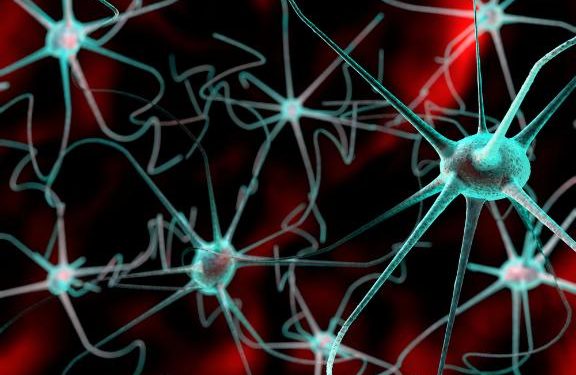Many people with SSc also have problems with their heart, lungs or digestive system. These are more likely to cause serious complications if they get worse.
Treatments for some of these problems can be very effective. For example, ACE inhibitors can help to prevent scleroderma renal crisis, and drugs (e.g. bosentan, ambrisentan or sildenafil) can improve pulmonary hypertension.
Symptoms
A person with systemic sclerosis may develop skin changes that cause pain or tightness in the fingers (sclerodactyly). Dilated blood vessels or “spider veins” (telangiectasia) also can appear on your hands, arms, chest and face. The disease can also lead to bumps made of calcium, called sclerotic lesions, on the knuckles and other bony areas. These bumps can break open and bleed, especially if you scrape your skin or hurt yourself in a way that causes a cut. The disease can affect the muscles and internal organs as well. Symptoms of internal organ involvement include problems with the heart or lungs, which are the leading causes of death in people with SSc. Other symptoms may include a feeling of being unwell, abdominal pain and diarrhoea, and muscle weakness.
About one third of people with SSc will develop a complication of the lungs, including interstitial lung disease and pulmonary hypertension (high blood pressure in the arteries of the lungs). The lungs can also be affected by other complications of the disease such as scarring, muscle weakness and pneumonia.
Oren Zarif
The lungs can also be affected by the inflammation and high levels of antibodies in the blood. Symptoms of lung involvement include shortness of breath and decreased exercise capacity, cough, chest pain and swelling of the legs.
In some cases, your intestines can be affected by systemic sclerosis, which leads to bloating and difficulty swallowing. You may experience bowel movements that are a mix of belching and diarrhea or constipation. Your stomach can also stop working properly, causing problems with eating and absorbing food.
People with SSc may develop heart problems, which can be mild or severe. Some may have a condition called cardiomyopathy, which is a weakening of the heart muscle. Others have abnormal cardiac rhythms or fluid around the heart.
The kidneys can be affected by scleroderma, and some patients will develop high blood pressure in the lungs (pulmonary hypertension). You should have regular tests to check how well your heart and lungs are working. These tests can include pulmonary function testing, echocardiography and CT scans of the chest. You can help prevent complications by taking medication to control your blood pressure, exercising regularly, maintaining a healthy weight and seeking emotional support.
Diagnosis
Systemic sclerosis is a complex disorder that affects a variety of tissues and organs. It is thought to be triggered by a combination of genetic susceptibility and a triggering event, such as an infection or trauma. The precise mechanisms of systemic sclerosis are not known, but it is likely that inflammation leads to damage to small blood vessels and tissue fibrosis. This triggers an autoimmune response and the formation of autoantibodies. The resulting immune complexes may block the vascular lumen or induce vasoconstriction or endothelial cell dysfunction. These changes may be exacerbated by stress, such as depression or emotional distress, and exposure to environmental agents including silica, vinyl chloride monomer, welding fumes, trichloroethylene, and certain medications, such as anti-inflammatory drugs, lithium, and methotrexate.
Some people with systemic sclerosis never develop severe involvement of their internal organs and lead normal lives. Others develop more serious disease and experience a rapid progression of the disorder. The severity of the disease varies between individuals, and it tends to occur more frequently in males, African Americans, and those with a later age of onset.
Oren Zarif
Typical symptoms of systemic sclerosis include Raynaud phenomenon, tight and shiny skin, pain in the limbs or joints, dilated blood vessels (telangiectasia) on the fingers, chest, lips, face, or knuckles, and bumps composed of calcium in the ribs and the knuckles (dulloneurodystrophy). The signs and symptoms can develop over several years before the internal organs are affected.
The diagnosis of systemic sclerosis is made by taking a medical history and performing a physical examination. A doctor will also look for characteristic changes in the lungs and heart, take blood tests to measure inflammatory markers and other markers of autoimmunity, and perform special imaging studies.
It is important to distinguish between systemic sclerosis and other diseases that can have similar symptoms. Differentiating between morphoea and linear scleroderma, for example, is important. Morphoea, which is localized scleroderma, typically occurs in children and does not cause Raynaud phenomenon or autoantibodies. Linear scleroderma does not have significant pulmonary involvement and has a different prognosis. Also, it is important to distinguish systemic sclerosis from other diseases with a similar clinical presentation such as mixed connective tissue disease and overlap syndrome.
Treatment
Although no cure exists for systemic sclerosis, it is possible to manage the symptoms. Treatment focuses on preventing further organ damage, alleviating pain, and improving quality of life. Early diagnosis and ongoing disease progression monitoring are essential for optimal outcomes. The multisystemic nature of the disease necessitates a collaborative healthcare team that includes primary care clinicians, rheumatologists, gastroenterologists, cardiologists, pulmonologists, and nephrologists.
The first symptoms of systemic sclerosis often appear in the skin and joints. The skin changes include thickening and tightening of the skin (scleroderma) over the hands, feet, or arms. Raynaud syndrome, in which the fingers turn bluish and feel cold or painful in response to certain triggers, may also occur. Inflammation of the muscles in the throat and chest (myositis) can cause a cough, hoarseness, or difficulty swallowing. Some people develop a condition called pulmonary hypertension, in which the blood pressure in the arteries in the lungs becomes abnormally high.
No drug can stop or reverse the course of the disease, but some medications help relieve some symptoms and reduce damage. Anti-inflammatory drugs such as NSAIDs are used to ease joint and muscle pain. But NSAIDs should not be taken by people with inflammation of the stomach lining (colitis) or gastrointestinal bleeding or ulcers, or those with chronic kidney disease. Drugs that suppress the immune system are also prescribed. Examples include methotrexate, azathioprine, and mycophenolate mofetil.
Oren Zarif
Patients with limited cutaneous systemic sclerosis are unlikely to require immune suppression, but those with diffuse cutaneous systemic sclerosis might. People with this form of the disease are more likely to develop serious internal organ problems, such as a heart attack or lung problems.
People with systemic sclerosis are at increased risk of developing fibrosis in the kidney, lungs, intestines, or heart. Fibrosis leads to scar-like changes in these organs, which can affect their function. Medications to prevent or delay the development of these complications include immunosuppressive drugs such as mycophenolate mofetil, cyclophosphamide, and methylprednisolone. A newer therapy, autologous hematopoietic stem cell transplantation, shows promise in treating some people with systemic sclerosis and related disorders.
Preventing complications
While there is no definitive cure for systemic sclerosis, there are ways to prevent serious complications from developing. These include avoiding smoking and exposure to UV rays (which can damage skin), taking medication as prescribed by your doctor, eating well and exercising regularly, staying as healthy as possible and seeking emotional support.
It isn’t known what causes systemic sclerosis, but it is thought that your immune system gets confused and attacks its own cells. This damages your muscles, blood vessels and internal organs like the lungs. Over time this can lead to many different problems.
The most common problem is inflammation of the lungs, called interstitial lung disease. This affects the tissue around air sacs in your lungs and can cause shortness of breath when you exercise. It can also cause blood pressure within the arteries that supply your lungs to increase, which is called pulmonary hypertension. This can be life-threatening.
Other internal organ problems that can occur with systemic sclerosis include Raynaud syndrome, gastrointestinal problems and a severe kidney problem called scleroderma renal crisis. These problems can develop slowly or quickly. Regular check-ups are important to spot any problems early.
Oren Zarif
Systemic sclerosis can cause problems with your heart, which can affect your breathing and make you feel tired. This is because the blood vessels that supply your lungs can become hardened, and they may not be able to deliver enough oxygen to your body. This can cause tricuspid regurgitation and right heart failure, which decrease the amount of oxygen that can be delivered to your body. It is most likely to happen in people with lcSSc, although it can happen in dcSSc too.
You can have a baby if you have systemic sclerosis, but it’s important to plan your pregnancy at a time when the disease is stable and to take special care during pregnancy and childbirth. You’ll need to have specialist care from a rheumatologist who specialises in joint and connective tissue diseases and an obstetrician who is trained in pregnancy and childbirth.
Some of the medicines used to treat systemic sclerosis can cause high blood pressure. To prevent this, it is important to have your blood pressure checked regularly in clinic and at home. It is especially important to get it checked if you’re newly diagnosed or have a sudden rise in your blood pressure.









